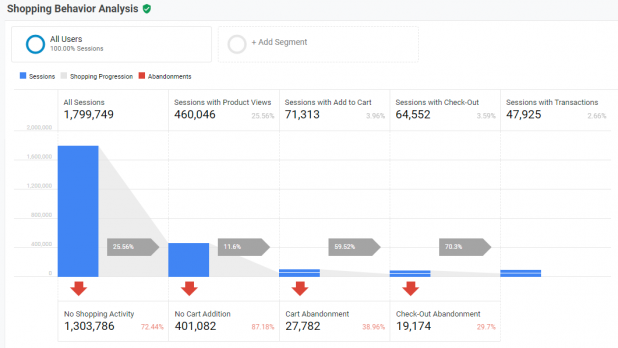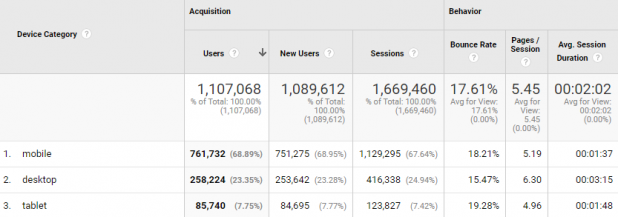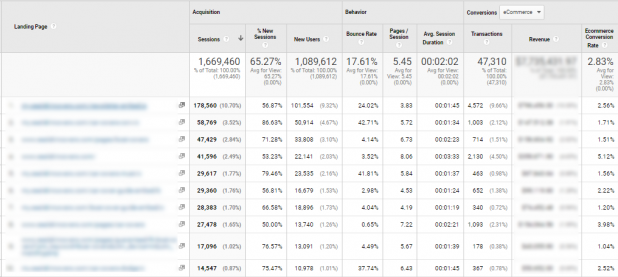Knowing your customer is still the most important driver of sales. The job of any marketing team is to understand the wants, needs, and priorities of your target audience better than your competitor—and then give them what they want. The good news is today, we have all the data we could possibly want to guide our twin efforts: motivating potential customers to buy and engaging current customers enough to keep them coming back for more.
Data is particularly important in the ecommerce space. Ecommerce thrives on data analytics; it’s the single thing that separates the success of your site from products that languish in the “www” like the tree that falls in the forest with no one to hear it.
But data is only good if you know how to use it. In the hands of an experienced data analyst, big data becomes big insight and big sales. Here’s how to use the data from your ecommerce site to market your way to higher revenues.
Using Customer Analytics to Whack-a-Mole
The multiple channels of ecommerce marketing are like a Whack-a-Mole game. Digital customers can come to your site from multiple points of interest, and you must meet the customer as they pop in and somehow convert them to a sale. But what if you could have the foresight to know which little digital mole head was popping out from which hole next? What if you could get the jump on those little popping varmints so you could wait outside their hole and give them a good whack on the noggin every single time?
As an analogy for marketing to the customers of an ecommerce site, this imagery actually works. But marketers are still flying blind (just like that burrowing mole) in some ways, because they can’t decide if they should use website content to convert an inbound customer or perhaps use email marketing, social media, or even paid advertising.
Where in the world can you gain the insight necessary to understand where to spend your marketing time and money so that you don’t miss a single customer, hitting every single one (bop!) on the head with the perfect marketing message, in the right channel, to close the deal?
The answer lies in the data.
Understanding Customer Analytics
Customer analytics provide the data points that show how your audience is interacting with your site, or with the marketing materials that lead them to your site. The data can show which marketing effort engages your target audience longer, or, conversely, which one is a total bust. This is true for each of the customer segments you target. Whether you make use of them or not, all marketing initiatives have some type of data attached. Just look at some of the most basic of data that you can glean from your ecommerce site:
- The number of page views and how long each visit occurs.
- The number of potential customers that click through on a featured offer.
- How many carts customers abandon.
- How many customers bounce off your page.
But today’s analytics tools can also yield more sophisticated information that can increase your mole whacking abilities exponentially:
- Which devices do your customers use to connect to your site?
- What are the top social channels delivering traffic to your site?
- Which products are hot and which are not?
- Which customer segment is buying which products?
- Who is visiting without buying?
- Which landing pages convert the most customers?
These numbers, whether simple or sophisticated, are not static. They are as lively as the Internet they ride on. The only way to understand these numbers, which are sitting there just waiting for your perusal, is to dig right in.
Finding the Answer Is Easy; Knowing the Question Is Harder
If your customer marketing channels are like Whack-a-Moles, your effort to analyze what’s happening in these channels is more like Jeopardy, Alex Trebek’s classic game show loved by nerds everywhere. In Jeopardy, the questions come in reverse order: Instead of asking the question first, contestants are given the answer, and their winning or losing response must come in the form of a question.
It’s the same idea in customer analytics; getting the right data requires knowing the right questions to ask. While the data can yield insights, you must look at it in reverse, determining what your strategic goals are or what insights you want to achieve. That will guide the data you select and how you analyze it.
For example, if you’re trying to develop a sales strategy for your ecommerce site to promote certain products, first determine exactly what you want to learn. These questions must be specific. Instead of “How can I sell more?” the questions should be:
- Which customer channels should we focus on to raise more revenue?
- Which of these “hot” channels is the most cost-effective?
- Which channels are leaking customers?
- What are the look vs. buy ratios for each product and product category?
- What marketing campaign got the best ROI—and how can we repeat that success?
These questions will help define which sources of the data you should be turning to. Is it Google Analytics? Sales and website data? Can IT provide the data or can you even DIY?
Finally, once you’ve defined the underlying strategy to optimize your ecommerce site, you can cull the data to determine how you should use it to meet your goals. That’s really where the rubber meets the road.
It’s Not the Data. It’s How You Use It.
Using customer analytics to optimize your ecommerce site can feel unwieldy. There is so much data available. How should you use it? We believe there are a few fundamental elements that data can inform to provide the most ROI for your site. Here are two to whet your appetite:
- Customer retention
The best way to reduce the cost of acquiring new customers is to retain more of your old ones. Looking at metrics for repeat purchasing will help you understand how many customers come back, how often, what they buy, and more. If these numbers are lower than they were last year, it signifies a problem that you can correct with pricing incentives for repeat customers or rewards programs. Conversely, where are you losing customers—and why? - User engagement
You may have website hits, but how does this relate to buying patterns? Look at time on page numbers and bounce rates to determine if the content on your website, whether a blog or a product description, is adding value to the customer experience. Would it help to add a video, since we know video remains an eye-catching way to share your story? Can you build a heat map to see where people are clicking on each page? What is it about those hot-button areas on your site that mirror customer needs, wants, and priorities—and how can you build on that success?
Ecommerce sites that fail to properly analyze customer data will continue to take a hit or miss approach to sales. The data has all of the information you need to run a successful business. You just need to take the time to leverage it properly.








